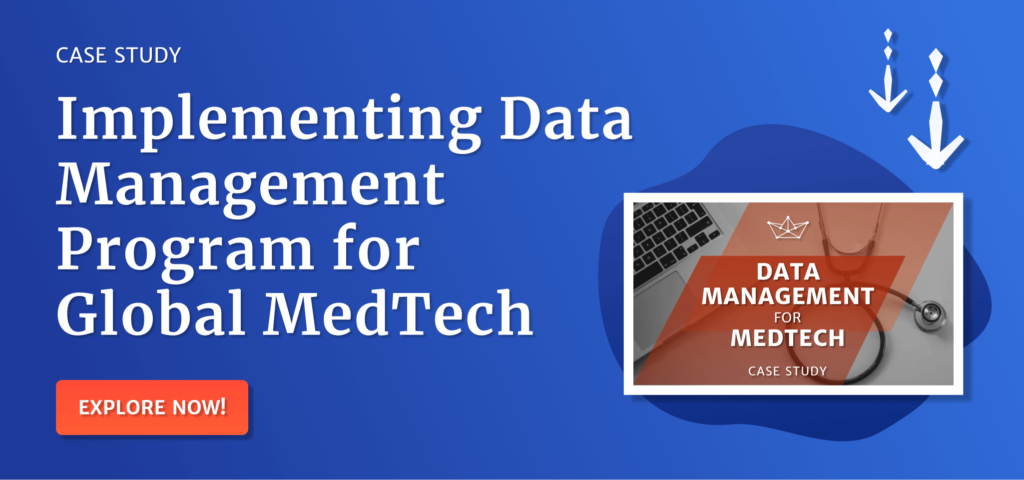Digital Transformation in Insurance Fraud Prevention: A Blueprint for Success


Share this article

In the ever-evolving landscape of the insurance industry, one challenge stands out like a formidable mountain—insurance fraud. It's a problem that's been around for as long as insurance itself, but in today's digital age, it has taken on new dimensions.
The question is, how can insurance companies effectively combat fraud in this digital era? The answer lies in the transformative power of digital technologies.
In this blog post, we'll explore the importance of digital transformation in insurance fraud prevention and delve into real-world case studies that demonstrate its impact.
The question is, how can insurance companies effectively combat fraud in this digital era? The answer lies in the transformative power of digital technologies.
In this blog post, we'll explore the importance of digital transformation in insurance fraud prevention and delve into real-world case studies that demonstrate its impact.
Why Focus on Digital Transformation in Insurance?
Insurance fraud is not a trivial issue; it's a multi-billion-dollar problem that affects the industry's bottom line and, ultimately, the pockets of policyholders. According to the Coalition Against Insurance Fraud, fraud accounts for an estimated 5-10% of claims costs each year in the United States, which translates to tens of billions of dollars.

In a world where technology is rapidly reshaping industries, insurance is no exception. To effectively combat fraud, insurance companies must harness the power of digital transformation. Here's why:
Data Insights: The digital era has ushered in an unprecedented era of data availability. Insurance companies now have access to vast amounts of data that can be analyzed to identify fraudulent patterns and anomalies. Machine learning algorithms can sift through this data far more efficiently than any human investigator.
Real-time Monitoring: Digital tools enable real-time monitoring of claims and policyholder behavior. Additionally, this means that suspicious activities can be flagged and investigated immediately, preventing fraudulent claims from being paid out.
Customer Experience: Digital transformation isn't just about preventing fraud; it's also about enhancing the customer experience. Streamlined processes, faster claims processing, and personalized services improve customer satisfaction.
Cost Savings: Fraudulent claims are costly, not just in terms of the claim itself but also in terms of the resources required to investigate and combat fraud. Digital tools can reduce these costs significantly.
Competitive Advantage: Insurance companies that embrace digital transformation are more agile and better equipped to adapt to changing market dynamics. This positions them as industry leaders and gives them a competitive edge.


In a world where technology is rapidly reshaping industries, insurance is no exception. To effectively combat fraud, insurance companies must harness the power of digital transformation. Here's why:
Data Insights: The digital era has ushered in an unprecedented era of data availability. Insurance companies now have access to vast amounts of data that can be analyzed to identify fraudulent patterns and anomalies. Machine learning algorithms can sift through this data far more efficiently than any human investigator.
Real-time Monitoring: Digital tools enable real-time monitoring of claims and policyholder behavior. Additionally, this means that suspicious activities can be flagged and investigated immediately, preventing fraudulent claims from being paid out.
Customer Experience: Digital transformation isn't just about preventing fraud; it's also about enhancing the customer experience. Streamlined processes, faster claims processing, and personalized services improve customer satisfaction.
Cost Savings: Fraudulent claims are costly, not just in terms of the claim itself but also in terms of the resources required to investigate and combat fraud. Digital tools can reduce these costs significantly.
Competitive Advantage: Insurance companies that embrace digital transformation are more agile and better equipped to adapt to changing market dynamics. This positions them as industry leaders and gives them a competitive edge.

KEY TAKEAWAYS
- Insurance fraud is not a trivial matter; it's a multi-billion-dollar problem that impacts the industry's financial health and, ultimately, policyholders' finances.
Digital Measures to Counter Fraud
Now that we understand why digital transformation is essential, let's explore the digital measures that insurance companies can employ to counter fraud effectively.


- Data Analytics and AI: The backbone of any successful digital transformation strategy in insurance is data analytics and artificial intelligence. Furthermore, these technologies can analyze large datasets in real time to identify unusual patterns that may indicate fraud. They can also improve underwriting by assessing risk more accurately.
- Predictive Modeling: Predictive modeling uses historical data to forecast future events, including fraudulent activities. For example, it can predict which claims are more likely to be fraudulent based on past behavior.
- Telematics: Telematics involves using IoT (Internet of Things) devices to collect data on how a vehicle is driven. This data can be used to determine the risk profile of a driver and detect potential fraud, such as staged accidents.
- Blockchain: Blockchain technology provides a tamper-proof ledger of transactions. In insurance, it can be used to create smart contracts that automatically execute claims when certain conditions are met, reducing the opportunity for fraud.
- Biometrics: Biometric authentication, such as fingerprint or facial recognition, can enhance security in the claims process. Than, it ensures that the person making the claim is who they say they are.
- Digital Claims Processing: Moving away from paper-based claims processing to digital systems can improve efficiency and reduce the likelihood of fraud. Also, digital claims can be processed more quickly and accurately.
Case Study: Consultport's Fraud Prevention Solution

Project Overview
The client in this case study, an insurance company in the Nordics, recognized the need for a digital transformation consultant to introduce an automated fraud detection tool that would enhance the efficiency and accuracy of identifying fraudulent claims.Role of Consultport: Consultport swiftly presented three qualified consultants within 24 hours and interviewed two of the candidates. Next, the client selected a former Senior Consultant from Capgemini with expertise in insurance technologies. Remarkably, the consultant commenced working with the client just 72 hours after the initial request.
Comprehensive Assessment: Collaborating closely with the client's fraud prevention team, the consultant conducted a meticulous assessment of the client's historical claims data and the existing fraud detection process. The consultant also engaged key stakeholders to understand the specific requirements and objectives of the tool.
Implementing the Tool: In conjunction with the client's IT teams, the consultant identified weaknesses in the existing practices. Than, they decided to collaborate with an external vendor that specialized in fraud detection. The consultant thoroughly evaluated multiple vendors and selected one whose products and security architecture aligned seamlessly with the project.
Results and Impact
The newly implemented fraud detection tool had the capability to rapidly analyze vast amounts of claims data and promptly flag potential fraudulent activities for further investigation. Additionally, the tool featured a user-friendly digital dashboard equipped with data visualization and reporting functionalities.Enhanced Fraud Detection & Customer Satisfaction: The introduction of the fraud detection tool significantly elevated the efficiency and accuracy of fraud detection, resulting in expedited claim processing and heightened levels of customer satisfaction.
Internally, the digital dashboard provided the fraud prevention team with invaluable insights into emerging fraud trends, enabling them to proactively adapt their strategies and stay ahead in the ongoing battle against insurance fraud.

Tips for Embracing Digital Transformation
If you're in the insurance industry and considering a digital transformation to prevent fraud, here are some essential tips to get you started:Project Overview

Assess Your Current State: Begin by conducting a comprehensive assessment of your current processes and technologies. Identify the areas where digital transformation can have the most significant impact.
Set Clear Goals: Define clear and measurable goals for your digital transformation efforts. What do you want to achieve? Whether it's reducing fraud, improving customer experience, or cutting costs, having clear objectives is crucial.
Invest in Talent: Digital transformation requires talent with expertise in data analytics, AI, and other relevant technologies. Consider hiring or partnering with experts in these fields.
Collaborate: Work closely with technology providers and consultants who specialize in insurance fraud prevention through digital transformation. Their expertise can be invaluable.
Regularly Evaluate and Adapt: The digital landscape is constantly evolving. Regularly evaluate the effectiveness of your digital tools and strategies and be prepared to adapt to new challenges and opportunities.
Embrace the Future
In an era where insurance fraud is a pervasive issue, digital transformation is the insurance industry's silver bullet. It offers the tools and technologies needed to combat fraud effectively while simultaneously enhancing the customer experience and reducing costs.
The case study of Consultport's success serves as a testament to the transformative power of digital measures. Embracing digital transformation is no longer a luxury; it's a necessity for insurance companies looking to thrive in the digital age.
So, if you're in the insurance sector, the question isn't whether to embark on a digital transformation journey; it's when to start and how to do it right. The answer lies in the urgency of now and the expertise of digital transformation consultants.
The case study of Consultport's success serves as a testament to the transformative power of digital measures. Embracing digital transformation is no longer a luxury; it's a necessity for insurance companies looking to thrive in the digital age.
So, if you're in the insurance sector, the question isn't whether to embark on a digital transformation journey; it's when to start and how to do it right. The answer lies in the urgency of now and the expertise of digital transformation consultants.
Share this article
Premium content,
on a weekly basis.
on a weekly basis.
Subscription implies consent to our privacy policy.
×
Subscribe to our newsletters!
Discover our Consultant's Expertise
Ready to get access to the world’s best consultants?
